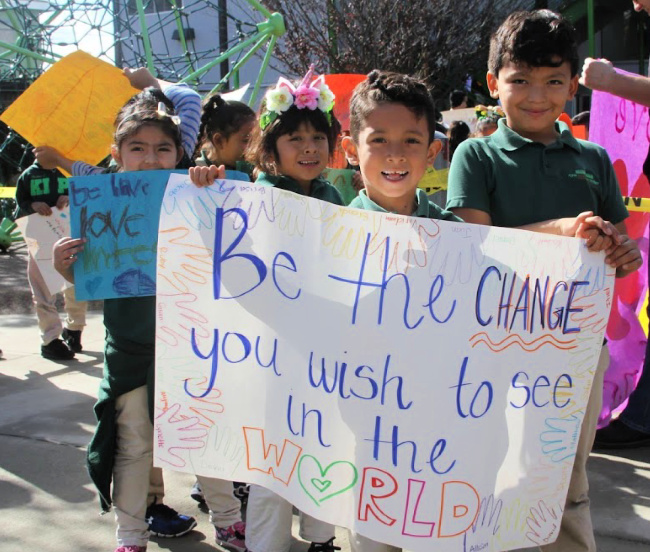“I don’t want to go back there. The kids are cruel, Mommy,” my son screamed.
It was the middle of the school day when I found him in tears, standing in the street outside the confines of his campus. I was devastated. My son had run away from school for the second time in his fourth-grade year because of persistent bullying by his classmates.
Working with my son’s school to find a solution was my top priority. Unfortunately, regular phone calls and meetings with his teacher and the school’s principal did not change my son’s traumatic experiences on campus. The school promised to assign an on-site counselor to him, but did not follow through.
At one point, I asked his teacher whether she could do anything to intervene when she saw his peers taunting him in the hallways or at recess. She replied, with a shrug, “You know how it goes, kids can just be mean.” This inevitability is a common perception of bullying at schools, and one I even started to believe myself. But it does not have to be the reality.
I soon felt helpless and didn’t know what more to do to support my son, until I heard about KIPP LA as another public school option through a close friend. Upon moving my son to KIPP Corazón Academy in Southeast Los Angeles this year, l learned that schools, families, and educators have an important role to play in creating an overall positive school culture.
It does not happen by accident, but rather starts with an intentional commitment by the whole community and an investment from leadership for proper resources. Setting standards of respect and inclusion makes all the difference when it comes to creating a safe, positive, and nurturing environment in which persistent bullying cannot exist.
At KIPP LA, teachers and leaders pride themselves on creating a culture that prioritizes unity over conflict. They treat each other with respect and kindness, which in turn teaches students to do the same. The staff is genuinely interested in getting to know each student and their families, greeting them by name each morning. Teachers welcome dialogue, speaking to students one-on-one in a gentle tone when resolving conflict and listening to their students’ concerns with genuine interest. That intentional relationship building and empathy flows down to the students themselves. When kids are encouraged to talk, share, and listen, the fears and ignorance that lead to bullying disappear.
Going one step further, KIPP Corazón Academy has actually built a positive culture into its academic curriculum through the teaching of values like advocacy, love, reflection, and ganas as well as restorative justice practices. For example, every day for 30 minutes students sit in a circle and talk about how they feel about current events in their lives and communities. They explore subjects like forgiveness, inclusion and empathy, as well as topics that the staff has noticed bubbling up on campus in order to proactively address issues. This is a way for students to discover common ground among their peers. Additionally, there was a school-wide focus on bullying prevention and awareness in October for National Bullying Prevention Month, in which students engaged in a variety of class discussions, watched instructional videos about what to do if you see bullying at school, and participated in unity art projects. Those lessons continue to be reinforced all year round through their teachers, leaders, and on-site counselors. In fact, KIPP LA has invested in 25 counselors across their 17 schools in greater Los Angeles who focus on building and maintaining trauma-informed classrooms, which shows a dedication to meeting the socio-emotional needs of all students.
Since attending KIPP Corazón, my son’s grades and physical health have improved. He reads more, and has learned to express himself using his words. Instead of taunts and teasing, he receives hugs and smiles from his supportive group of friends. He wakes me up excited and ready to go to school, rather than being scared to attend. And most importantly, he feels comfortable to be himself. I know it’s because he is going to a school where students’ physical and emotional safety are prioritized, which feels really good as his mom.
My best advice for parents when deciding if a school is the right fit for their child, especially one who has been targeted by bullying, is simple – look for a school where everyone is invested in creating a positive environment that has no tolerance for bullying.

